10 Intriguing Facts about Bogota – Colombia
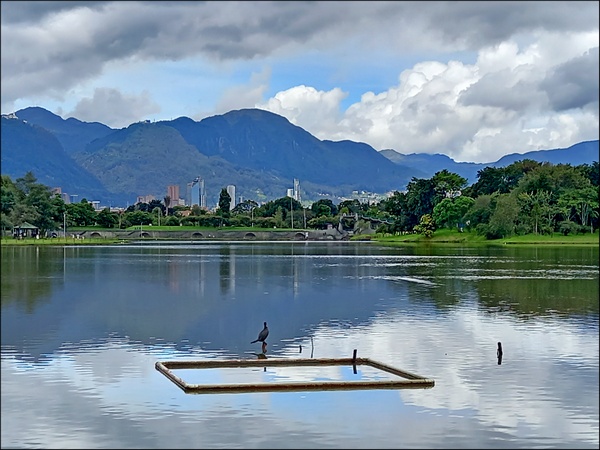
1. Bogota is Safe to Visit
This might be the most surprising fact about Bogota for Americans and Europeans. Colombia in general, and Bogota in particular, have a bad rap as being dangerous.
Most of Bogota’s modern-day notoriety is due to the drug trade and particularly Pablo Escobar. However, the height of the drug cartels in Colombia was in the 1980s and early 1990s. Escobar was killed in 1993. In case you didn’t notice, that was 30 years ago!
Since then, Colombia and its major cities of Medellin and Bogota have worked very hard to clean up crime, improve their cities’ living standards and safety.
Nowadays, according to expert international sources, Bogota actually has a considerably lower crime rate than many US cities, including Miami, Indianpolis and Pittsburgh!
Bogota is also considered one of the safest cities in South America.
So basically, anyone who still thinks of Bogota as a dangerous, crime and drug-ridden city needs to get with it. You’re three decades behind, folks!
I’ve been here in Bogota, exploring all its many interesting neighborhoods, parks and museums for nearly two weeks. I walk the streets, take buses, eat in local restaurants.
I’ve never had one single problem or even once felt I was in a dodgy situation. I’ve asked many local citizens, in many different areas, about safety walking around as a solo woman. They’ve all told me it’s safe to walk around in the day time, but not to take out my cellphone on the streets. That’s it.
Night time in popular, inhabited areas is also deemed safe. The main thing is to avoid walking at night in empty, dark areas.
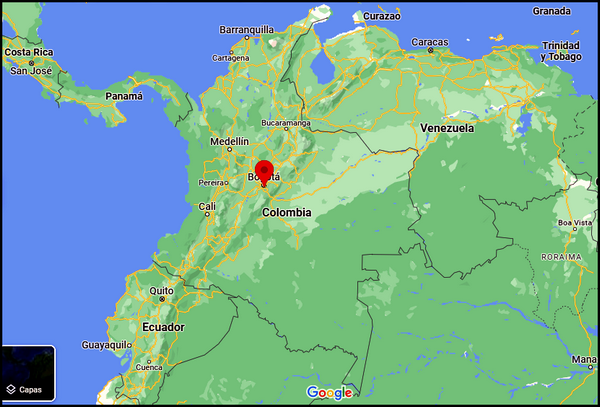
2. Bogota is the Capital of Colombia
For people overeas, Medellin or Cartegena are probably the most well-known cities in Colombia. It’s not so obvious that Bogota is the capital of the country.
In fact, Bogota’s status as capital city started way back in 1538 when the conquiring Spanish set the city as their capital of New Granada (their colony in northern South America).
Over the centuries, the name of the city has changed a few times, but it’s always retained its status as the capital city. Here’s where Colombia’s indepence movement was based and where the seat of government is established.
3. Bogota is the World’s 5th Highest Major City (Elevation)
Bogota sits in the Andes Mountains at an elevation of 2650 M / 8660 ft.
It’s not quite as high as Quito, Ecuador (2850 M / 9350 ft) and it’s far lower than the highest capital in South America – and the world – La Paz, Boliva, which rests at 3650 M / 11,975 ft.
Bogota also ranks as the world’s 5th highest capital city, with Thimphu, Bhutan squeezing in at fourth place.
4. Bogota lies just 4.6° N of the Equator
The Equator line runs through Colombia’s southern neighbor, Ecuador. More specifically, it runs just past the northern reaches of Quito, Ecuador’s capital city (which makes Quito the world’s closest capital to the Equator).
But Bogota is not too far further north. A flight from Quito to Bogota takes less than 1.5 hours.
Lying at Latitude 4.6° N means Bogota also ranks as one of the world’s closest capital cities to the Equator.
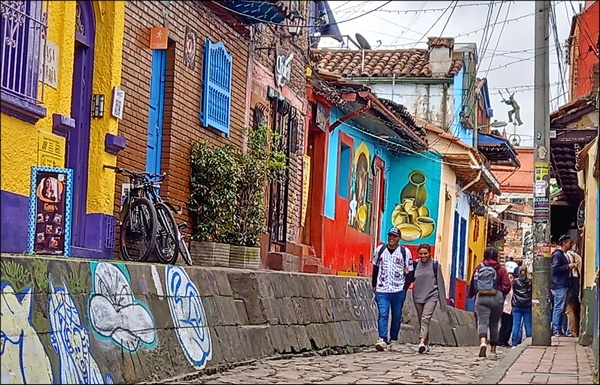
5. Bogota has surprisingly cold weather
The geographical combination of being situated very close to the Equator and at a high elevation has given Bogota a very unusual climate.
Considering its so close to the Equator, it’s surprsing to learn how chilly Bogota is, year-round. At night, the temperature is usually in the mid 40s F / 7-10 C. Who would guess any place near the Equator could ever get so cold?
It all feels even colder because nobody uses heat indoors! Even at those cold night-time temperatures.
Day time temps, year round, usually reach just 15-18 C / low to mid 60s F. Much of the time it’s overcast, either partially or completely. And it rains a lot in Bogota. That all makes the day-time temperatures feel even cooler.
During moments – or rare hours – when the sun shines and a bit of blue sky appears, things warm up considerably.
Bogota’s closeness to the Equator means that these temperatures remain the same throughout the whole year. The only real diversity in weather is between rainy season and dry (drier) season.
Bogota is more or less cool, chilly or down right cold, all year round.
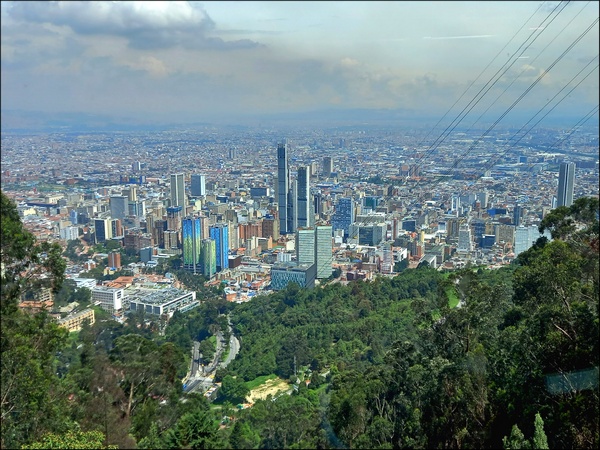
6. Bogota is a Mega-City with over 11,000,000 Inhabitants
Bogota is a massive city with a very ‘Big City’ feel to it, like Tokyo, Bangkok or New York. It’s huge both in geographical terms and population.
The city rests at the eastern edge of a vast plateau and is abruptly halted on its eastern side by a long, near-vertical forested mountain range, running north-south. As a result, Bogota also runs primarily north-south, backed up against the mountains.
North to south, Bogota runs 33 km / miles. East to west it spreads 16 km / 10 miles.
Not surprisingly, the city has a whole slew of very diverse neighborhoods and districts. There’s the beautiful historic district of La Candlaria, a big financial district, a few posh wealthy residential neighborhoods, upscale nightclub/bar/restaurant areas, and of course, some poor slums.
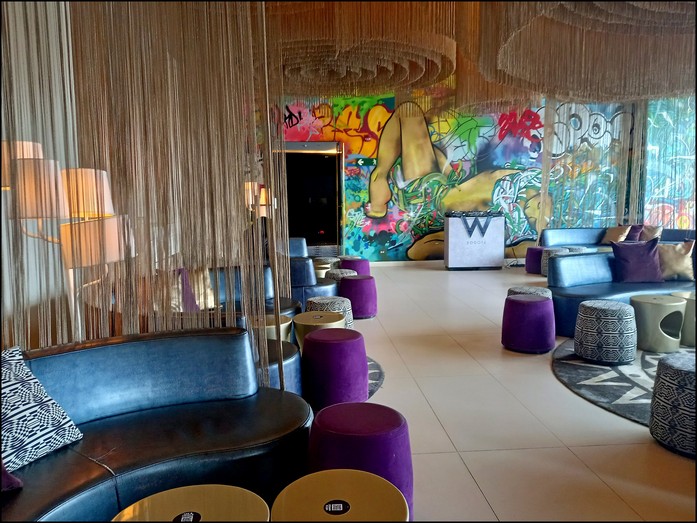
7. Bogota is a very Modern, Vibrant & Cosmopolitan City
Bogota has the vibe and lifestyle of big modern cities I’ve visited in Australia, USA, England and Western Europe.
Thousands of cyclists pedal the city’s miles and miles of dedicated cylcing lanes, which run through the middle of major roads, along wide sidewalks and through big parks.
There are huge urban gyms, international shopping malls, all sorts of ethnic restaurants, upscale bars & nightclubs, many universities full of students.
The streets and sidewalks are busy with buskers, musicians, vendors, skateboarders and motorized stand-up scooters. Food delivery men race around on their bikes and motorcycles with huge thermalized food boxes.
Every color of hair is on display, all the colors of the rainbow. There are Punks, Goths, Posh upperclass women, sleekly-suited businessmen and thousands of university students.
Lots of amazing, cutting-edge contemporary architecture graces Bogota. Even some luxury hotels are ultra-contemporary in design.
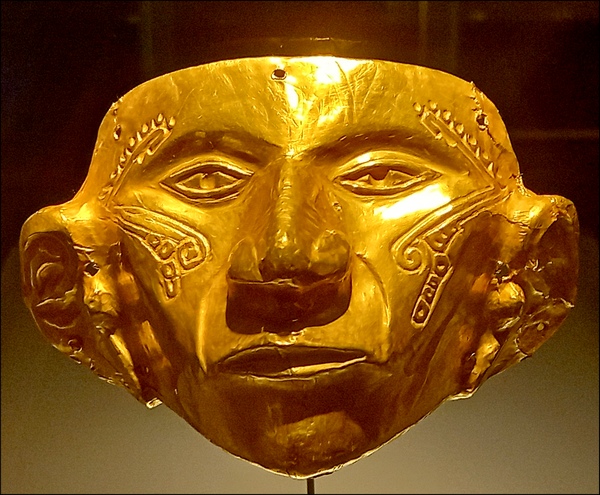
8. The world’s largest collection of gold is located in Bogota
Of all the countries in the world, all the super-wealthy countries in the world, who would guess that lil ole Colombia down in South America would own the world’s largest collection of gold?!
Well, for anyone who knows that Colombia historically is famous for its gold reserves, this may not be quite as surprising as for others.
Bogota’s famed Museo de Oro (Gold Museum) houses 55,000 pieces of gold. Most are historic artifacts from the pre-Colombian indigenous tribes. They include all sorts of jewelry, body ornamentation, artistic objects, sacrificial objects, tools and other gold pieces.
The indigenous goldsmiths developed several advanced and labor-intensive techniques for making many different styles of gold objects. Most on display at the museum have intricate detailing, some even with moving parts that tinkle in the wind. The museum not only displays thousands of spectacular gold art works, it also explains and demonstrates various gold-making techniques and details the lives, beliefs and customs of dozens of pre-Colombian tribes in Colombia. This international-standard museum is well worth visiting when in Bogota.
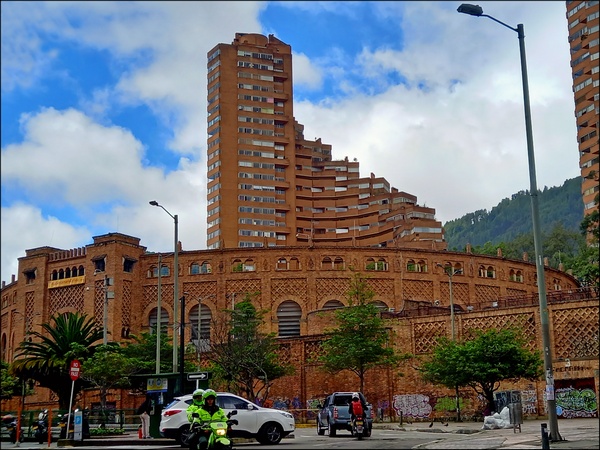
9. Bogota is full of brick buildings
I think the very first thing I noticed about Bogota, while I was taking my taxi from the airport after arriving from Quito, Ecuador, was the many tall brick apartment buildings.
That was very unexpected. I hadn’t seen any brick buildings in Ecuador, even though I traveled around the country for three months and visited at least 10 towns and cities of various sizes. There, aside from the beautiful historic districts found in most towns, the modern sections of Ecuadorian cities are constructed of ugly, unimaginative boxy cement buildings and houses.
In fact, in most coutnries of the world nowadays, the vast majority of towns and cities have been built of ugly, economical cement. Hideous.
So I was very surprised, indeed, to discover that Bogota is primarily built of brick. As I explored the city, visiting many different types of neighborhoods, I continued seeing brick buildings everywhere. Apartment buildings, houses, office complexes, malls and even some luxury hotels are all constructed of brick.
It quickly began reminding me of England, which is almost entire brick. Besides all the huge brick buildings, there are also many British-style pubs, Tudor houses and other British-style architecture scattered around Blogota.
Bogota’s builders haven’t confined themselves just to buildings. There are brick sidewalks, driveways, roads, walls, plazas. Brick is literally under foot, to the sides and soaring above you.
If I didn’t know about the Spanish conquest of South America, I would have sworn Colombia had been colonized by the British!
As it turns out, apparently England did have a big hand in helping Colombia with their independence from Spain abck in the early 1800s. I’m not sure if this explains all of Bogota’s brickwork or not.
But it certainly helps Bogota look considerably nicer than many other modern cities of the world.
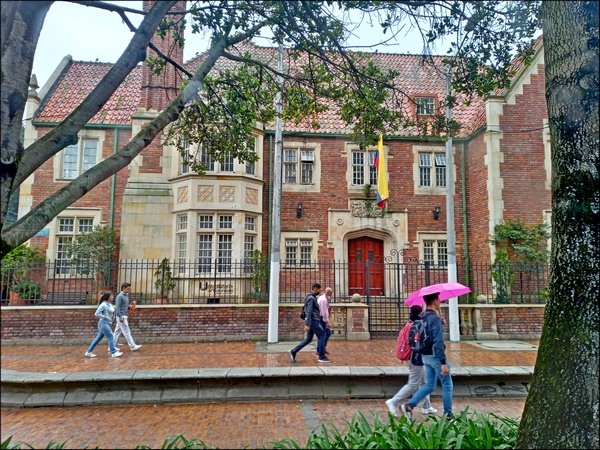
10. There are 76 Universities in Bogota
This includes all sorts of schools of higher learning, such as business schoools, accounting schools, tech schools as well as various sizes of universities.
But of these, 20 are actual universtiies with several different faculties and areas of study. They range from big public universities such as University of Colombia to smaller private universities such as University de Salle.
Regardless, 20 universities is a lot for any city in the world. In fact, whenever I’m moving around central Bogota, it seems like I’m constantly passing yet another university.
This also means that there are young students everywhere. Of course they add a lot of vibrancy and energy to Bogota. I also see a lot of interesting fashions, including punks, Goths, skateboarders and so on.
===============================









 Hi! I'm Lash, an American nomadic world traveler who's been traveling solo since 1998. I’m passionate about traveling the world nomadically and then sharing it all with you. I hope to inspire you to travel the world, to entertain you with tales from the road, and to help you reach your travel dreams. Welcome!
Hi! I'm Lash, an American nomadic world traveler who's been traveling solo since 1998. I’m passionate about traveling the world nomadically and then sharing it all with you. I hope to inspire you to travel the world, to entertain you with tales from the road, and to help you reach your travel dreams. Welcome! 




4 pings
9 Observations about Colombian People - LashWorldTour
2022/06/09 at 8:04 am (UTC 8) Link to this comment
[…] « 10 Intriguing Facts about Bogota – Colombia […]